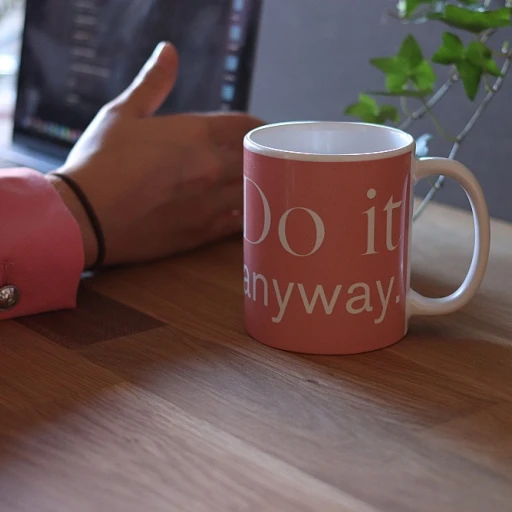Understanding the Dynamics of Multiple Candidates
Managing Multiple Candidates in a Single Interview Slot
In today's competitive job market, it's not uncommon for hiring managers to face the challenge of interviewing multiple candidates for a single position. This scenario can be both time consuming and complex, requiring a strategic approach to ensure each candidate is given a fair opportunity to showcase their talents. Understanding the dynamics of having three candidates arrive for an interview is key to navigating this HR challenge effectively.
When multiple candidates are scheduled for interviews, it's essential to have a well-structured interview process in place. This helps in maintaining consistency and ensures that each candidate is evaluated on the same criteria. The role of the human resources team is crucial here, as they help in crafting a process that aligns with the company's hiring goals.
One effective strategy is to stagger the interview times slightly, allowing for a brief transition period between each candidate. This not only gives the hiring manager time to gather their thoughts but also ensures that each candidate receives the attention they deserve. Additionally, having a clear agenda for each interview can help streamline the process and keep it focused on the key aspects of the role.
It's also important to consider the environment in which the interviews are conducted. A comfortable and professional setting can help put candidates at ease, allowing them to answer questions more confidently. This is where the human resources team can play a pivotal role in setting up the interview space to reflect the company's culture and values.
For those looking to delve deeper into mastering the art of handling multiple candidates, exploring HR panel interviews can provide valuable insights. These resources offer guidance on how to effectively manage the dynamics of interviewing several candidates at once, ensuring a seamless and productive interview process.
Crafting a Structured Interview Process
Structuring Interviews for Consistency and Clarity
Crafting a structured interview process is integral when preparing for multiple job candidates arriving at your company. As a hiring manager or human resources professional, maintaining a well-organized procedure will help ensure that each interview is conducted efficiently and fairly. Here are key elements to consider:
- Determine the Sequence: Arrange the interviews in such a way that maximizes both yours and the candidates’ time. Scheduling breaks between sessions can provide a buffer for unexpected delays or in-depth discussions.
- Develop Standardized Questions: Before the interviews commence, create a set of standardized questions that directly relate to the job role and key responsibilities. This approach allows you to cross-compare candidates’ answers effectively.
- Assign Roles to Panel Members: If the interview includes a panel, clearly define each team member’s responsibilities. Having specific roles helps focus the interview process, ensuring that all elements are covered, from technical skills to cultural fit.
- Utilize an Evaluation Form: Prepare a candidate evaluation form that each interviewer will fill out post-interview. This not only aids in capturing immediate impressions but also supports later decision-making.
- Technical Set-Up: Ensure any technology needed for interviews is set up and functional before the interviews begin. Technical glitches can consume valuable time and affect candidate impressions.
Creating a structured interview sequence is not only important but necessary in today’s competitive job market. It signals to the candidates that your company is both professional and considerate, enhancing your employer brand. Additionally, a consistent framework aids in overcoming the challenges of evaluating talent fairly across multiple interviews.
Evaluating Candidates Effectively
Key Metrics for Candidate Evaluation
Evaluating candidates effectively is crucial in the hiring process, especially when multiple candidates are vying for the same position. The key to a successful evaluation lies in establishing clear metrics that align with the role and the company's goals. This ensures that the hiring manager and the human resources team can make informed decisions without wasting time.
Start by identifying the core competencies required for the job. These competencies should be directly linked to the responsibilities of the position and the skills necessary to excel in the role. Consider both technical skills and soft skills, as both are essential in today's job market.
Structured Evaluation Techniques
To streamline the interview process, employ structured evaluation techniques. This involves using standardized questions and scoring systems to assess each candidate's responses. A structured approach not only helps in maintaining consistency but also reduces bias, ensuring a fair assessment for all candidates.
One effective method is the STAR technique, which stands for Situation, Task, Action, and Result. This technique helps candidates provide detailed and relevant answers, allowing interviewers to gauge their problem-solving abilities and past experiences. For more insights on crafting effective STAR responses, you can visit this resource.
Collaborative Evaluation
Involving multiple team members in the evaluation process can provide diverse perspectives and help in making a balanced decision. Encourage the hiring manager and team members to share their observations and insights after each interview. This collaborative approach not only enriches the evaluation process but also ensures that the candidate is a good fit for the team and company culture.
Remember, the goal is to find the right talent that aligns with the company's values and can contribute positively to the team. By focusing on structured evaluation and collaborative decision-making, the human resources team can navigate the complexities of interviewing multiple candidates efficiently.
Maintaining Candidate Engagement
Keeping Engagement High During Interviews
When three candidates arrive for an interview, maintaining a high level of engagement can be challenging, yet it is essential for both the candidates and the company. This is not just about ticking the box of having "completed the HR process" but about genuinely understanding which candidate will thrive in the role.
Firstly, it's crucial for the human resources team to create a welcoming atmosphere right from the start. Starting the interview with an introduction to the company and the role not only sets expectations but also helps calm candidate nerves—ensuring they feel valued and respected from the outset.
Ensure that the interview involves active listening. This may sound elementary, but it can make or break the candidate's interview experience. When hiring managers actively listen and respond thoughtfully to each candidate's answers, it shows respect for their time and input. This helps in creating a positive impression of the company, an attractive quality in today’s competitive job market.
Additionally, involve multiple team members in the process. This allows candidates to engage with different perspectives, showcasing the company culture and giving them a clearer picture of the team dynamics. Conversely, it provides the interviewers with insights from various angles of expertise that may prove crucial in the hiring decision.
Fostering an environment where candidates feel encouraged to ask their own questions can also bolster engagement. Encourage candidates to inquire not just about their potential role but about the team and the company's broader vision. This transforms the interview from a one-sided interrogation into a dialogue, enhancing mutual understanding.
Lastly, remember that candidate engagement doesn't end with the interview itself. Keeping open lines of communication and providing timely updates post-interview can significantly enhance candidate experience, even for those not moving forward. A transparent, communicative approach demonstrates respect for the candidate's time and effort, reinforcing a positive company image.
Prioritizing engagement during the often time-consuming interview process reflects a company’s commitment to hiring the best talent, ultimately aiding in finding the right fit for the position.
Handling Unexpected Situations
Unexpected Scenarios and Their Impact on the Interview Process
In the fast-paced world of hiring, human resources professionals frequently encounter scenarios that deviate from the norm. These unexpected situations can range from technical issues to candidates arriving unprepared or late, and they demand a level of adaptability and quick thinking to maintain the flow of the interview process.
One of the most common unanticipated events is an unexpected technical glitch during video interviews. Ensuring backup options and alternative contact methods can help navigate these disruptions. Proactive planning, involving the team and the hiring manager, can ensure that such hurdles do not derail the interview, allowing the candidates to demonstrate their talents without unnecessary stress.
Another scenario might involve candidates who deviate from expected response patterns or struggle to answer questions effectively. This can stem from nervousness or misunderstanding what the role entails. In these cases, human resources professionals must be adept at asking clarifying questions and providing context, allowing candidates to realign their responses with the key competencies required for the position.
It's also essential for the hiring team to remain flexible with their time. Interviews can run longer than expected, especially when evaluating the fit of multiple candidates for a crucial position. Building a schedule that accommodates minor delays can prevent the process from becoming too time-consuming.
Moreover, maintaining open communication channels with candidates throughout interviews can help alleviate any unforeseen issues. Candidates appreciate when they feel informed and involved, reinforcing their interest in the company and role. The emphasis on positive candidate experience remains pivotal in competitive job markets.
Embracing the unexpected during the interview process is a testament to effective human resources management. Navigating these scenarios requires a blend of preparation, flexibility, and a candidate-focused approach to ensure the best talent aligns with the company's vision and goals.
Post-Interview Follow-Up and Decision-Making
Effective Follow-Up Procedures
Once the interviewing process is complete, it's crucial to proceed with a comprehensive evaluation and follow-up plan. This helps maintain candidate interest and ensures the best decision is made for the role.
Start by gathering all necessary feedback from the interview team. This step is essential to compare evaluations and discuss each candidate's fit for the position based on the key competencies identified in earlier stages of the process. A structured debriefing meeting can often clarify any discrepancies in opinions and provides a unified approach in the final decision.
Utilizing Evaluation Tools
To effectively evaluate candidates, consider using a scoring system or evaluation tools that rate skills, cultural fit, and potential for growth within the company. These metrics are not only helpful in creating a fair assessment but also in separating qualified candidates in a competitive job market. Human resources teams often develop these tools to streamline what can be a time-consuming decision-making process.
Maintaining Communication with Candidates
During this time, it's vital to keep the candidates informed. Transparency about the timelines and decision-making process reflects positively on the company and maintains candidate engagement. Prompt communication will help candidates feel valued and respected, whether they advance to the next stage or not.
A courteous closure is equally important. For successful candidates, ensure to extend an offer that clearly outlines their role and the company expectations. For those not moving forward, a thoughtful and timely rejection message can leave them with a positive impression of the company. Keeping potential talent pools engaged can be advantageous for future hiring opportunities.
Finalizing Decisions as a Team
Finally, the hiring manager, along with the human resources team, should come to a consensus about which candidate best fits the role and company culture. This collective decision ensures that the new hire will be someone who not only fulfills the immediate needs of the role but also complements the team dynamic.
By maintaining a clear post-interview process, human resources can ensure that hiring decisions contribute to the long-term success of the company.













